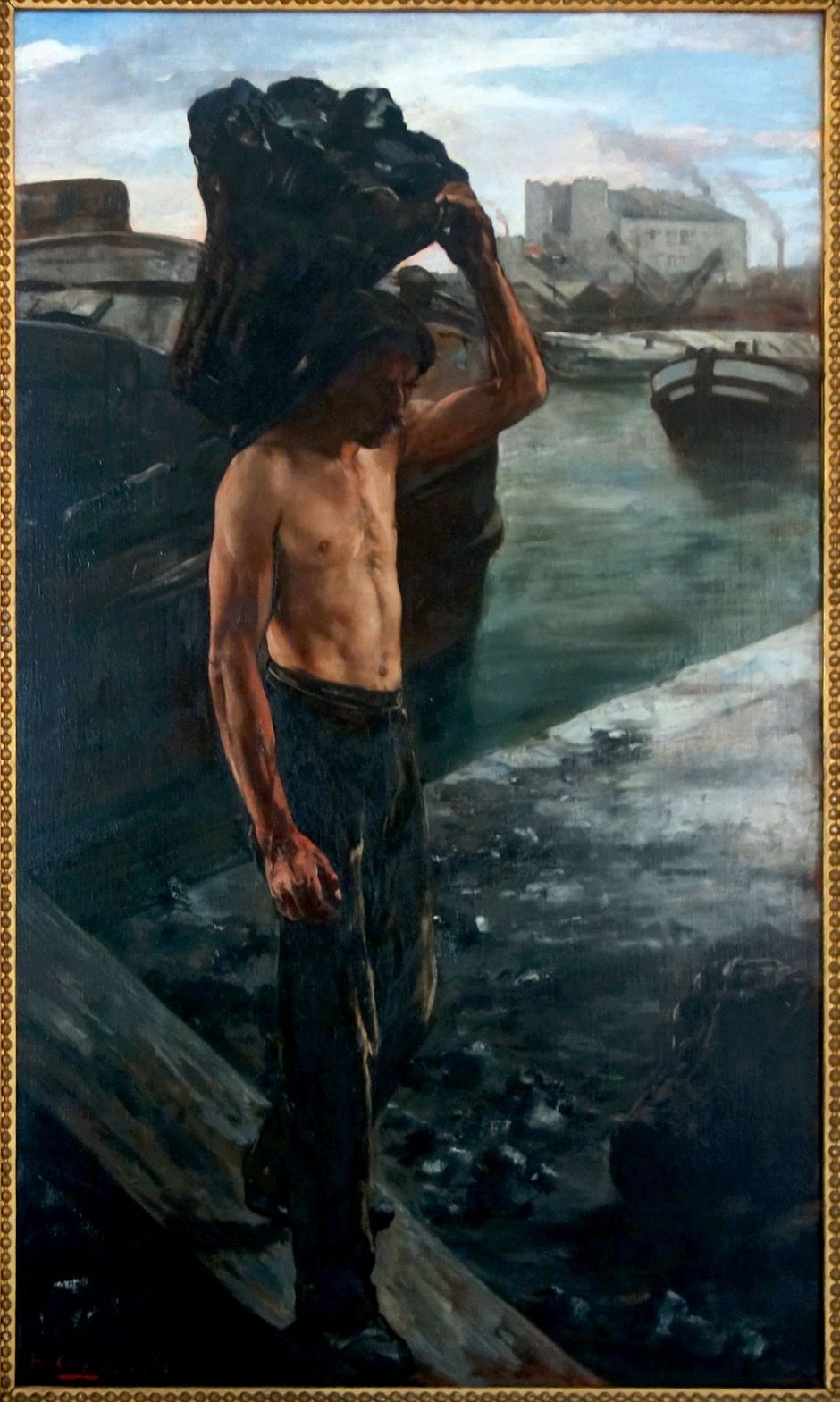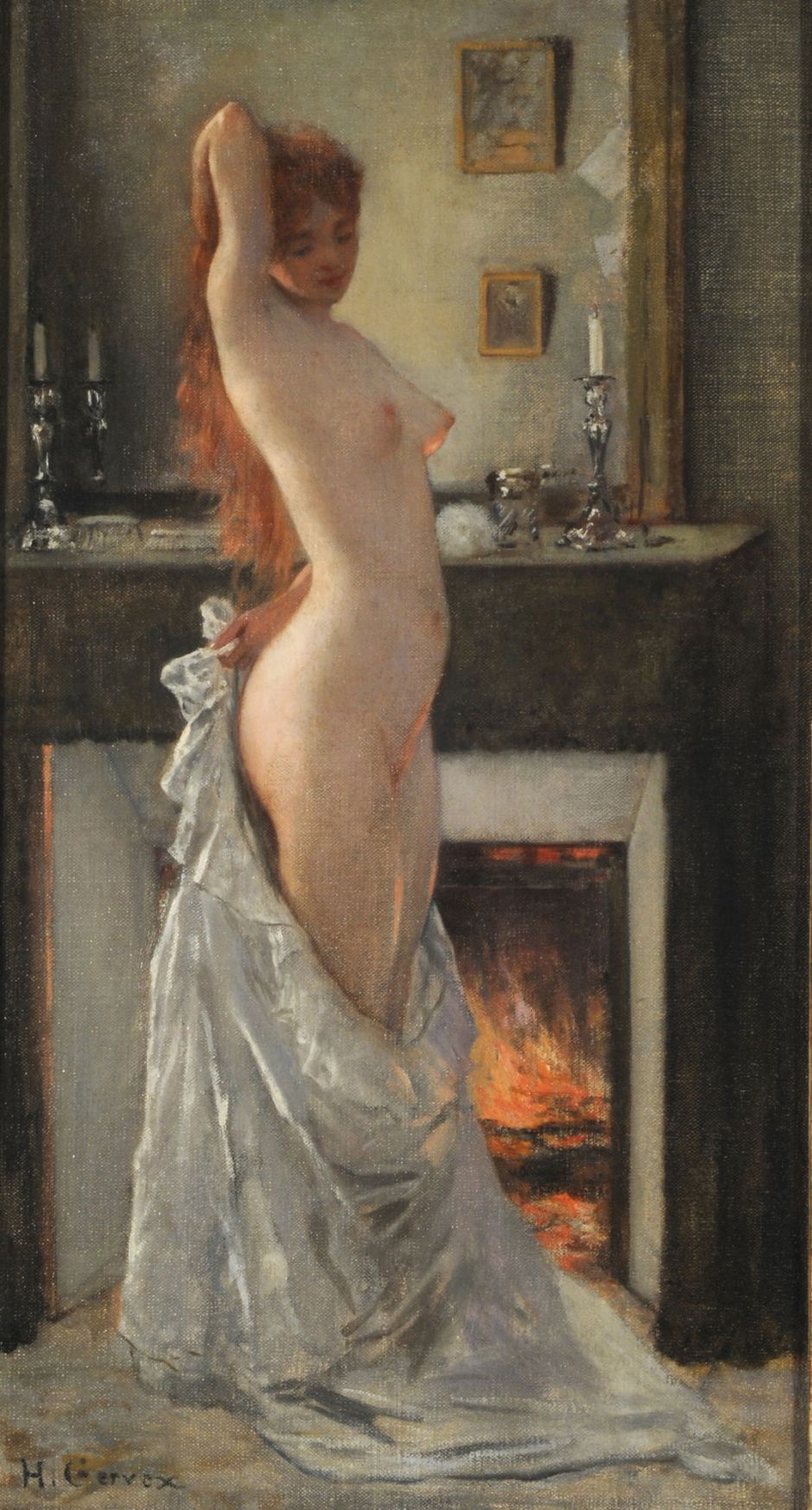Having come across the ‘naturalism’ of Christian Krohg, I’m going to look at a few artists who have been grouped with him in this mysterious movement. It’s not an easy task, because ‘naturalism’ was really defined not in the visual arts, but in literature, with Émile Zola (1840-1902) as its benchmark there; in literature, Naturalism is a well-known genre and even merits a capital letter.
In painting, though, it has become overlooked, overwhelmed by our obsession with Impressionism. The artists usually claimed to have been Naturalist, other than Krohg, include Jules Bastien-Lepage, Gustave Caillebotte, Jean-François Raffaelli, Léon Lhermitte, Alfred Roll, and Henri Gervex. To those you might add Millet and Breton for their ‘social realism’.
I have previously looked at the paintings of the first three:
- Jules Bastien-Lepage in two articles, the first here and the second here;
- Gustave Caillebotte in this article; and
- Jean-François Raffaelli in this article.
Like Caillebotte and Raffaelli, Henri Gervex (1852–1929) was in the Impressionist circle, probably more closely even than they were. But his painting style and later works were more characteristic of the Academicist enemy, and I don’t think that he ever came close to exhibiting with the Impressionists. Indeed, he was long one of the Salon’s most brilliant lights.
Gervex was born in Paris in 1852, making him the same sort of age as Christian Krohg and the other Naturalist painters. He studied first under Pierre-Nicolas Brisset at the age of only fifteen, then after the Franco-Prussian War under Alexandre Cabanel at the École des beaux-arts in Paris. He also completed an apprenticeship with Eugène Fromentin.
He made his debut at the Salon in 1873, at the age of twenty-one, and for the next couple of years seems to have painted rather run-of-the-mill mythical subjects, albeit very successfully. In 1876, he joined the circle of Manet and the Impressionists, but steadfastly retained his Salon style.

For the Salon in 1876, he painted a work which I have been unable to locate, a scene showing an Autopsy at the Hôtel-Dieu; above is a study which he made for it earlier that year. This was the main Paris morgue of the day, and I make two striking observations about this work: first, that mortuary scenes are extremely uncommon in painting, and second that the corpse being examined is so thin as to have died as a result of starvation – in Paris, in 1876.

Gervex’s success in the Salon was short-lived. In 1878, he submitted the work for which he is now most famous: Rolla. There would have been nothing wrong with this nude had she been in a classical setting, but like Manet’s notorious Olympia (1863) before, her contemporary surroundings and the heap of clothes beside her were deemed immoral.
Rolla was inspired by a poem by Alfred de Musset about a prostitute, and Gervex depicted her asleep in bed as her client gets dressed the following morning. Their clothes are mixed together, and tumble onto the floor beside her.
Gervex got a commercial gallery to exhibit this painting, where it attracted far more attention than it would have in the Salon. He next worked on paintings showing Zola’s heroine in Nana, who rose from walking the streets to being a high class courtesan. Unfortunately I have been unable to locate good images of those.

Gervex’s career forged ahead, and in 1882 he visited Britain with the sculptor Auguste Rodin. He also painted this labourer unloading a coal barge on The Quai de la Villette, Paris, a far cry from Rolla’s bedroom.

At around this time, he also seems to have got his revenge, in a subtle way, by painting A Session of the Painting Jury. The painting which they are voting on is, unsurprisingly, a ‘classical’ nude.

Then in 1887 he became one of very few painters to depict medical and surgical procedures, in his Before the Operation. This work’s full title is Dr Péan Teaching His Discovery of the Compression of Blood Vessels at St Louis Hospital, and when exhibited at the Salon that year it was compared favourably with Rembrandt’s Anatomy Lesson of Dr. Nicolaes Tulp (1632).
Doctor Péan was apparently celebrated in Paris at the time, and Gervex invokes the aura of modern medicine, which was progressing in leaps and bounds. In the lower left corner are some surgical instruments to inspire awe. The patient, of course, is an attractive young woman, whose body is extensively exposed. Gervex couldn’t resist the opportunity.
One of the major influences on Naturalism was the great French physician and physiologist Claude Bernard, whose books were popular with Zola and his circle. Bernard started his career at the Hôtel-Dieu Hospital whose mortuary Gervex depicted.
By 1890, then, Gervex had painted a number of works which were realist rather than theatrical, objective rather than subjective. Unlike the Impressionists, he was not trying to paint the sensations of his motifs, but the objects themselves. This is Naturalism, not Academicism, or Impressionism.
Then Gervex attained international recognition and, like Krohg, his Naturalism fell away.

Gervex painted many wonderful portraits, and beautiful figures such as this undated Parisian Woman at her Toilet. The avant garde moved on to Neo-Impressionism, then Post-Impressionism, neither of which was for Gervex.

He still painted some fascinating and well-observed images, though. The late nineteenth century saw the rise of fashion houses, which he records in such detail in Five Hours at Paquin’s (1906). It’s a bit like cramming all of Degas’ paintings of the milliners into a single canvas.

He also painted society events, of which A Soirée at the Pré Catelan (1909) is perhaps his best. This shows a function at one of the most famous restaurants in Paris, on the Bois de Boulogne, which was established in 1905 and is still going strong today.
As with Christian Krohg, it seems a shame that his Naturalism fell by the wayside so soon.

